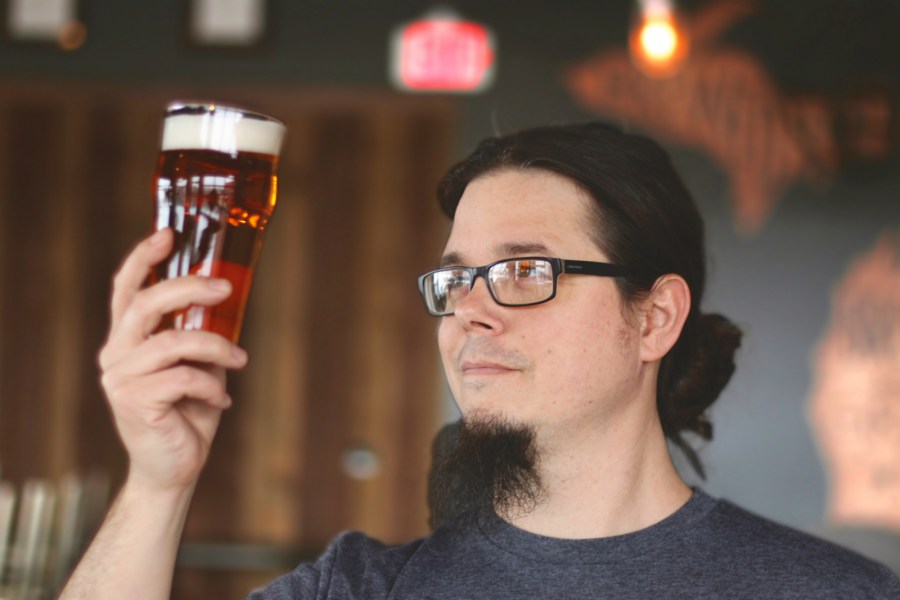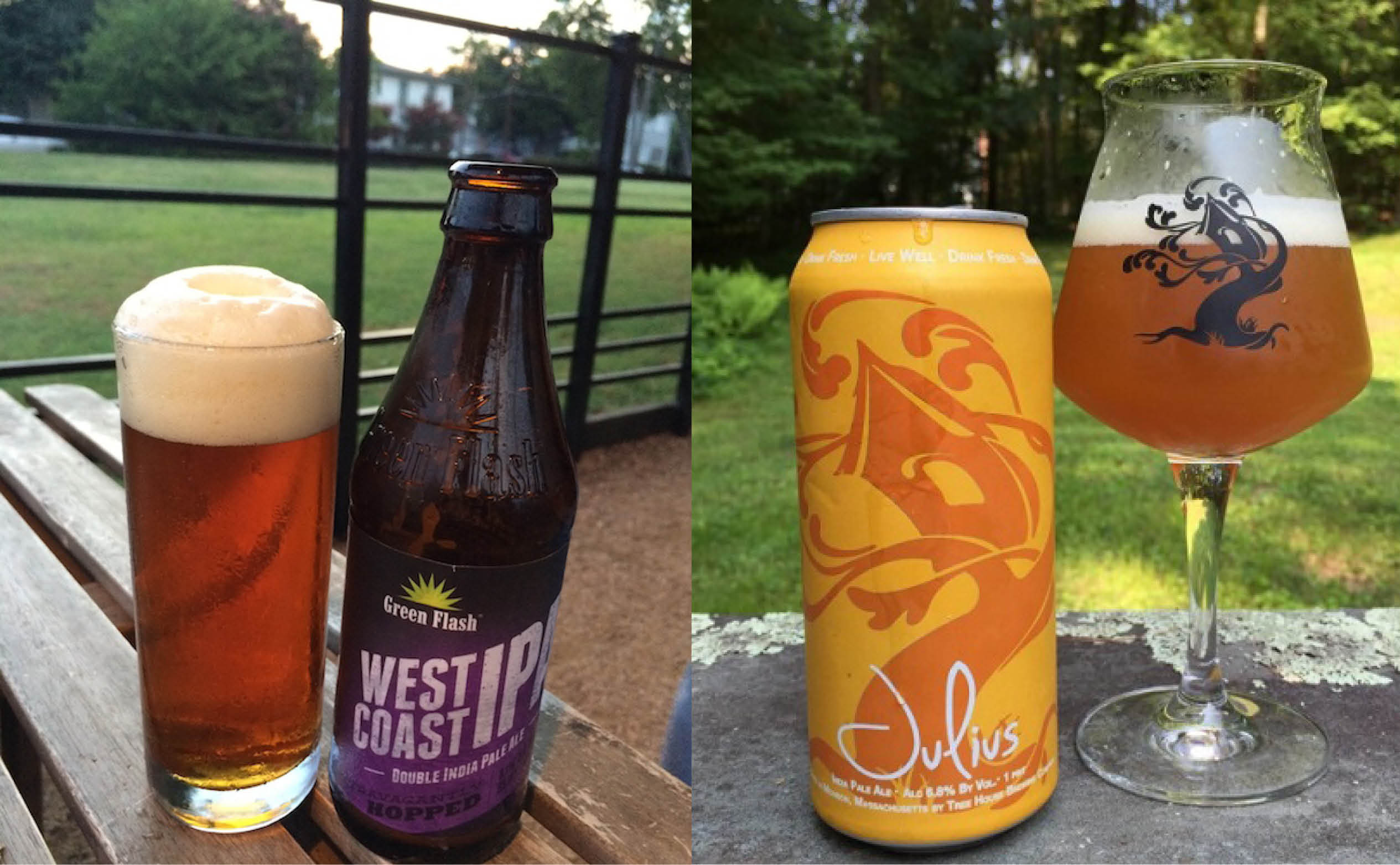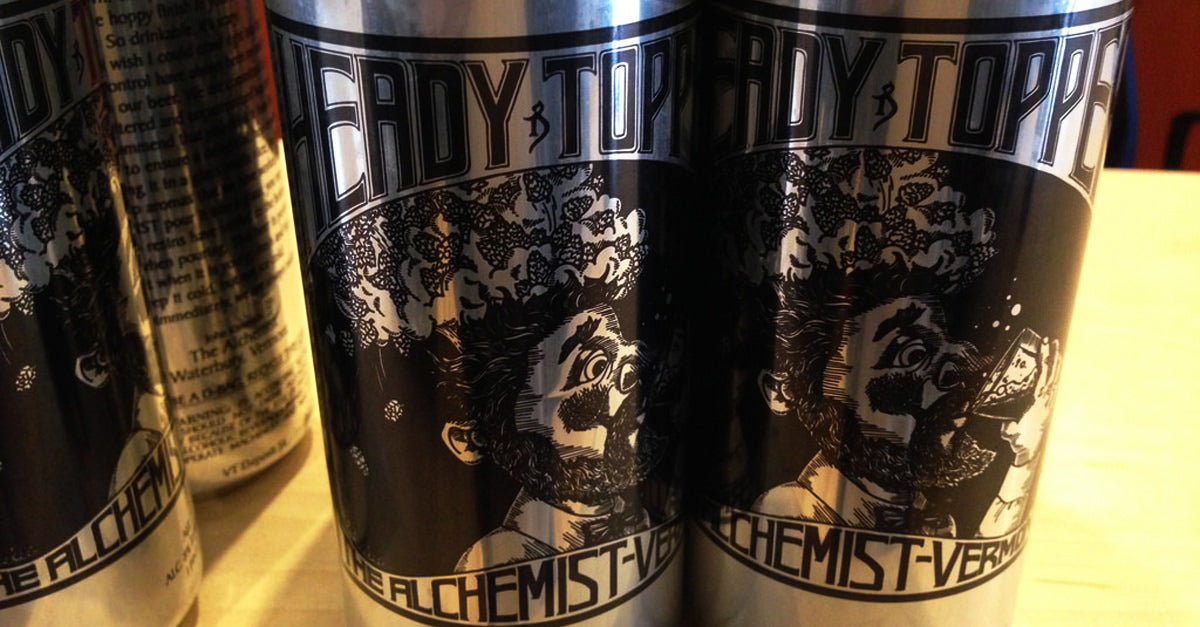Anatomy of a Beer Trend: The New England IPA
It’s tropical, hazy, citrusy and above all, juicy. Over the past few years, the “New England” style IPA has exploded in popularity. There are now craft breweries in Boston, Chicago, San Diego and everywhere in between having a go at brewing the juiciest, hoppiest and haziest beers they can. Whether or not that last criterion is a good thing will be addressed later.
While the style is primarily known for its pungent citrus and tropical fruit aroma and flavor, the significant haze and turbidity is also a trademark of the beer, with most of it coming from the copious amount of hops and some yeast particulates left suspended in the beer after a rigorous regimen of dry-hopping and non-filtration.
John Kimmich, co-owner and brewmaster at The Alchemist in Waterbury, VT also believes that new yields of hops have helped the flavor become more pronounced over time.
“As new hybrid hops have hit the market in the last few years, the tropical character has evolved,” he said in an email.
In fact, the first canning of The Alchemist’s Heady Topper Double IPA back in 2011 is often viewed as the catalyst for the popularity rise of this style. With that canning run, Heady Topper achieved beer cult status, even famously showing up at a celebrity-filled party after the Emmy Awards in 2013.
In fact, according to six years of past Beer Advocate data, Double IPAs have doubled in popularity, taking 30 of the top spots for the 100 best beers in the world as of October 2016.
The two images above represent a pattern between the rise of the New England IPA and the brewery locations crafting the most popular IPAs and Double IPAs. As the number of Double IPAs increase in popularity (from the bottom gif) you can see the shift towards those beers coming from New England. (Data gathered from Beer Advocate. Please see end of the article for additional details.)
But even with the style’s increasing popularity, are all brewers ready to jump on the juice train and start brewing this IPA with its intense flavor and non-traditional look? Joe and Lauren Grimm of Grimm Artisanal Ales in New York City are already onboard.
“It is simply more succulent, juicy, aromatic, and pleasurable. It is a repudiation of the IBU wars,” say the Grimms. “The excitement around these beers is genuine and it is driven by flavor.”
While many may agree, there are still some peculiarities surrounding the murkiness of the beer that have some brewers scratching their heads. Most notably the addition of whole wheat flour that some homebrewers and even (by speculation) a few breweries have been adding to their beers to achieve that super hazy appearance synonymous with the style.
“Some brewers are jumping on the bandwagon and simply getting it wrong: muddy-looking, underattenuated, messy yeast glop,” say the Grimms. “Or adding flour to simulate the look of hop haze, which we find ridiculous.”
Although it’s difficult to pinpoint when a brewer “crosses the line”, most tend to agree that whole wheat flour is a step in the wrong direction. Jeremy Danner, Ambassador Brewer at Boulevard Brewery in Kansas City, MO feels that those using adjuncts just to achieve haze are looking at the end result without thinking of the process.
“Adding flour to me is like making spicy salsa by dumping capsaicin in it,” Danner says. He added that while these beers are hazy, it’s simply up to the brewmaster and the customers themselves to decide what constitutes a well crafted beer. “If the brewer is happy, and the customers are happy, then it’s probably a good beer.”
Many people (at least in New England) certainly think so. According to Beer Advocate, out of the 100 top peer-ranked and reviewed beers in the world, 40 fall into the IPA or Double IPA category. Out of those, 80% are from New England. Compare that to 2010 when there were 19 total IPAs and Double IPAs ranked in the top 100 beers, and none were from New England. (While there are limitations from pulling information from subjective, user generated data, we feel confident making assumptions based on major shifts like these.)

Jeremy Kosmicki (above), Brewmaster at Founder's Brewing is of the opinion that while the New England IPA is flavorful, it should be cleared up instead of left hazy.
Some professional brewers go even farther to say that while these beers are indeed tasty, a turbid beer just isn’t one they’d like to create. Brewmaster Jeremy Kosmicki at Founder’s Brewing in Grand Rapids, MI feels that way. He says that while he likes how the style utilizes hops, haze is just not what he wants in his beers, and the demand for a New England style IPA isn’t quite there in the Upper Midwest.
However, he made mention that he has tried several, most recently at New England IPA heavy hitter Tree House Brewing.
“I love what they’re doing with getting their hops in there late and keeping the bitterness low while maintaining a big hop flavor and big aroma,” he says. “That’s a trademark in a lot of the beers I do too. It’s just we go an extra step of using a centrifuge, and it kind of cleans up that flavor and I think lets you appreciate the hops in more of a refined manner.”
But even as of early this year, Kosmicki was completely unaware of the style. And at the Extreme Beer Fest in Boston in February, found out rather abruptly that the New England IPA scene had a huge following.
“It’s a funny story, I was at the EBF back in February, and [our stall was] right next to Tree House actually. I didn’t know anything about them, and hadn’t heard about the New England IPA at the time. And when they opened the doors, here come all these people running in, running towards us. I was thinking ‘Oh boy here we go’, and everyone ran right past us, right to Tree House. I was like what the hell is this?” he says with a laugh.

A "West Coast IPA" from Green Flash Brewing, considered a...well...West Coast IPA next to "Julius" from Tree House Brewing, which is considered a New England style IPA. You can see the noticeable difference in haze between the two.
Regardless of whether the Brewer’s Association officially recognized the New England IPA as its own unique style, it’s safe to say that the New England IPA has transcended from a murky fad into a clearly accepted take on the IPA style. Kimmich also mentions how the low perceived bitterness is more of an illusion stemming from the overall quality of the beer.
“Unless delicious IPA is a trend, I think it is here to stay,” he writes. “I know people say it is low bitterness, but I disagree. Many people assess poorly made, astringent IPA's as being assertively bitter, when in fact, they just aren't good.”
And as the mind behind the beer that seemed to kickstart it all, Kimmich adds that he’s been aware of the power of a well-crafted IPA for far longer than the recent popularity rise.
“I have been an outspoken hop head for more than 20 years, [and] people are just finally realizing what Jen and I have known for years. IPA is addictive,” he writes.
When asked whether the popularity of the Alchemist’s (D)IPA’s dictate what the brewery will come out with next, Kimmich points to his own palate for the answer that hop-heads love to hear.
“I have total freedom to brew whatever I want, pretty much whenever I want. I made everything under the sun for nine years while running the pub, but I almost always had at least 3-4 IPA's on tap at any given time,” he says. “I love drinking hops and I love brewing with hops.”

Heady Topper is widely considered the beer that shifted the IPA landscape, adding more citrus and tropical notes, building less of a bitter finish, and keeping the haze generated from an abundance of hops.
Along with Kimmich, both Danner and Kosmicki stress the importance of staying true to the beer they personally enjoy and want to brew. Kosmicki sites the Founder’s Brewing motto of ‘Brewed for Us’ as a main driver for his recipe selection.
“When I’m designing a beer, I think, ‘What do I want to drink?’. We want to make beer that’s going to sell, but we’ve been pretty fortunate that people have shared our taste in what they’re looking for,” he says. “We’re really proud of our portfolio.”
Danner also emphasizes continued experimentation on the fact that while the New England IPA is popular now, there will always be new trends that become popular later.
“Every year we always say that we’ll slow down innovation, but every year we end up putting out new beers,” Danner says. “It’s a way for us to experiment, and the tastemakers crave new.”
And as for the New England IPA, it seems that for now some brewers are going to steer clear of jumping on the bandwagon. Kosmicki is one brewmaster in that category, but says it’s important to learn from other breweries doing something right, even if there are differences of opinion.
“Traveling around and visiting breweries is a great way to get inspired. If I can go out to Tree House and get inspired by their beer, maybe not make a New England IPA, but get inspired by the way they’re doing things, that’s great,” he says. “It’s a way to pay homage and come up with some new ideas that people around here haven’t seen yet.”
Featured Image from VinePair.
The above data was compiled from 2010 - 2016 from Beer Advocate Top Beer data. Although this user-rated data is subjective and has limitations, and although Beer Advocate uses a special algorithm to calculate each beer’s score, we feel that this data gives a fair representation of the rise and evolution of the New England IPA style.
It should be noted that top beer data from 2012 was actually taken from early January 2013 as there was a lack of cached data from that year. Data from 2011 was also unavailable.

